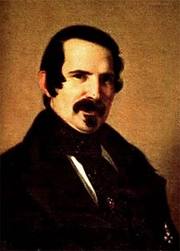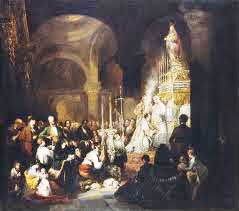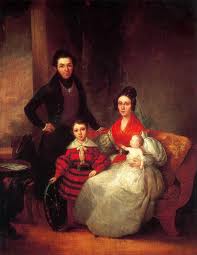Costumbrismo: Joaquín Fernández Cruzado
Joaquín Manuel Fernández Cruzado was a Spanish painter who is most famous for his portrait work and his 'costumbrismo' paintings of everyday life in Spain. Cruzado painted in the Romanticist style of painting during the 19th Century.
Joaquín Manuel Fernández Cruzado (1781-1856)

Joaquín Manuel Fernández Cruzado was born in the Spanish city of Jerez de la Frontera in the province of Cádiz. His family was already quite artistic as his father, José Fernández Guerrero, was a Spanish sculptor and academic who worked in the 'Escuela de Bellas Artes de Cádiz' (School of Fine Arts of Cádiz). Joaquín Manuel Fernández Cruzado originally began studying at the 'Seminario de San Bartolomé' (Seminary of Saint Bartholomew) in Cádiz. Later, Joaquín Manuel Fernández Cruzado would go and study at the school where his father worked. Cruzado also studied in the 'Real Colegio de Cirugía y Medicina' (Royal College of Surgery and Medicine). Cruzado's father thought it would be useful for his son to study the human anatomy in order to help him recreate it accurately in his paintings.
His father's school awarded Joaquín Manuel Fernández Cruzado with a grant which enabled him to go and study in Rome at the partner institution. However the threat of war against Napoleon meant that he could not go. In 1808, Joaquín Manuel Fernández Cruzado went to study in Madrid at the 'Academia de Bellas Artes de San Fernando' (Academy of Fine Arts of San Fernando). However, during his time studying in Madrid, the War of Independence started and Cruzado was enlisted as a soldier in the Spanish Army in order to fight against Napoleon's troops.

Joaquín Manuel Fernández Cruzado remained a part of the Spanish Army for many years, although this did not stop him from obtaining his degree from the Academy of Fine Arts as well as being named an academic of merit in 1814. Cruzado excelled in the army as well, reaching the rank of Captain from 1819 and receiving, amongst other decorations, the 'Cruz de San Hermenegildo' (Saint Hermenegild Cross). Cruzado also travelled to Latin America in order to fight in the Spanish colonies against the rebels who wanted their independence from Spain. In Spain, he fought against the incoming French reinforcements called the 'Cien Mil hijos de San Luis' (Hundred Thousand Sons of Saint Luis), which were being led by the Duke of Angulema in order to support Ferdinand VII in his fight against the rebels and his aim to restore absolutism.
Two years before Joaquín Manuel Fernández Cruzado returned home to Cádiz, his father died which left his position as a professor at the School of Fine Arts of Cádiz open. Cruzado eventually returned home in 1824 where he took over his father's former job, dedicating himself to teaching as well as rediscovering his love of painting. While working at the school, Cruzado decided to invest in gas lighting so that the pupils were able to spend more hours per day studying art. In 1850 he was given the title of 'Profesor de dibujo del natural y pintura de los estudios superiores de la Escuela Especial de Bellas Artes de Cádiz' (Professor of Natural Drawing and Painting of Superior Studies of the Special School of Fine Arts of Cádiz).

The majority of Joaquín Manuel Fernández Cruzado's paintings were completed during the 1850s. He completed a variety of paintings with many different styles including religious paintings, 'costubrismo' paintings, and portraits. Some of his religious paintings can be found in the Cathedral of Cádiz.
If you want to see this Spanish painter's works in Spain, there are many museums that have his works on display. In Madrid, his work is displayed at the Romanticist Museum. Cruzado's paintings are also available to view in the Museums of Fine Arts of Bilbao and Cádiz. There are also many private collectors of Joaquín Manuel Fernández Cruzado's works, particularly in the USA, South America and Spain.
